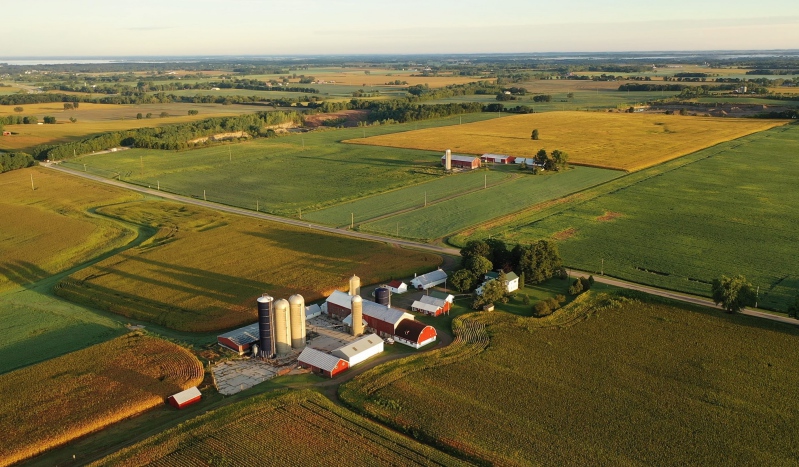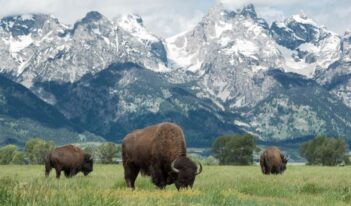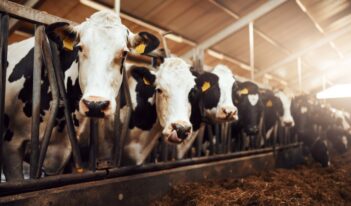
A history of regulatory exclusion continues to encourage unequal access to land ownership.
Protests against racialized police brutality spread across the world in May 2020, igniting a widespread reckoning with systemic racism. Yet here in America, one form of racial inequality requires more public and political discussion: the need for land reform.
Striking racial inequalities exist in who owns, operates, and benefits from America’s farmland. Private individuals or corporations own two-thirds of land in the United States, and the U.S. government owns about one-third. As of 2012, white Americans owned 98 percent of America’s privately owned farmland—approximately 856 million acres, worth about $1 trillion.
White Americans operate 94 percent of privately owned farmland. Black Americans own less than 1 percent of U.S. farmland, worth about $14 billion. Farmers of color are much more likely to be tenant farmers, who are much less likely to generate wealth from their farm work. In terms of acreage, people of color who are non-operating landowners own 4 million acres, which is a stark contrast to the 187 million acres owned by white Americans.
Similar racial disparities exist in farmland operation. Owner-operators of color own 53 million acres compared to white owner-operators’ 775 million acres. Tenant farmers of color stewarded 7 million acres, yet white tenant farmers stewarded 80 million acres. Only 7.4 percent of farming businesses operated 41 percent of the farmland in 2012. Those businesses had sales of at least $500,000 each on average, which is 80 percent of American farm sales. 80 percent of American farms sell, on average, less than $100,000 annually, often losing money and requiring the supplementing of income with an off-farm job.
Not only do white individuals own a significant portion of American land, so does the U.S. government. About one-third of the United States land area is owned by the federal government and is either kept preserved in public parks or sold and leased for industrial production.
How did the country get here? White American settlers and their descendants have always had the upper hand in land control, ever since the nation was founded. Indigenous land dispossession and enslavement of Black people were the basic building blocks of these settlers’ wealth accumulation, entwined in the interdependent settler-native-slave triad of settler-colonialism that pushed white settlers ahead of the wealth game from the beginning.
Even after the abolition of slavery, the U.S. Department of Agriculture (USDA) has maintained a long history of discriminating against Black farmers by denying them access to loans. Black farming peaked in 1910 when 14 percent of farmland was owned by Black Americans. The number has dwindled over time as a result of lending discrimination, culminating in a class action lawsuit and ultimately a settlement that awarded more than a billion dollars in relief.
The U.S. government has conceded reservations–small parcels of the land supposedly meant to protect Native communities from further harm in the wake of settler-colonialism. Yet, these reservations remain fragmented, without a coherent land base for many of the Native nations, and they have shrunk in size over time due to various federal land sales and seizures. Treaties between the U.S. government and Native nations have been made and broken time and again over the course of American history. Reservations and treaties were often initiated by force rather than consent from Indigenous peoples.
Over the last four years, the Trump Administration offered to transfer over 98 million acres of public land and waters to oil and gas companies. In the mid-1800s, land grants were given to railroad companies and states to stimulate industrialization. More recently, the Great American Outdoors Act passed in the U.S. Senate in 2020, which allocates $360 million per year for federal land acquisition—up to 567,000 acres per year. Urban development tends to grab the most productive farmland, at 1.5 million acres per year.
Today, about a quarter of farmland buyers on the U.S. farmland market are institutional investors. In 2008, the national average price of land hit a record high of $2,140 per acre, threatening a land price bubble waiting to burst. U.S. real estate values have steadily increased up to $3,160 per acre in 2019 from $1,610 per acre in 2005. Similarly, U.S. cropland has increased to $4,100 per acre in 2019 from $2,060 per acre in 2005. U.S. pasture increased to $1,400 per acre in 2019 from $740 per acre in 2005. This increase in land prices serves to enclose it from access to America’s poor—disproportionately people of color.
Despite increasing inequality, recent legislation signals potential redress for Black farmers.
Through the American Rescue Plan Act of 2021, the U.S. Congress allocated $4 billion in debt relief for “socially disadvantaged” farmers. The socially disadvantaged farmers category includes African Americans, Hispanic Americans, Asian Americans, and Native Americans farmers. Under the Act, Congress earmarked $1.01 billion to fund programs, grants, and loans for socially disadvantaged farmers, including equity commissions to address racial equity issues within the USDA and its programs. U.S. Secretary of Agriculture Tom Vilsack reportedly said the plan is an “acknowledgment that acts of discrimination took place” and noted that the “cumulative effect of being discriminated against … grows over time. And in order for us to have an equitable and a fair USDA, it is necessary for us to address that gap.”
Another possible solution lies in the recently proposed Justice for Black Farmers Act of 2020. This legislation would create a review board for civil rights violations within the USDA and would demand a moratorium on foreclosures during any investigation of civil rights violations. It would increase funding for legal assistance and banking services for Black farmers and create an Equitable Land Access Service within the USDA to buy land from the open market for land grants of up to 160 acres for Black farmers. It would also create a Farm Conservation Corps, or an army of USDA jobs in sustainable farming for young and beginning farmers and ranchers, socially disenfranchised farmers and ranchers, and organic farmers who make less than $250,000 per year. It would help support farmer training programs offered by historically Black colleges and universities and would strengthen the Packers and Stockyards Act of 1921 to challenge the excessive market power of meatpacking monopolies.
A federal land trust program, as well as a federal land tax, could be implemented to ensure that land and financial resources are redistributed back to Indigenous communities. Ultimately, any land reform that does not redistribute American land back to Indigenous peoples will fail to serve justice.
Proposing a bill to abolish land speculation is another possible approach to challenging land inequality. Driving up the price of land through speculation actively prevents the majority of Americans from accessing their constitutional right to both life and property. American rights to life and property are intertwined—without land, food cannot be produced, and life cannot be sustained. We all have a right to the land, and to be able to live from that land.




